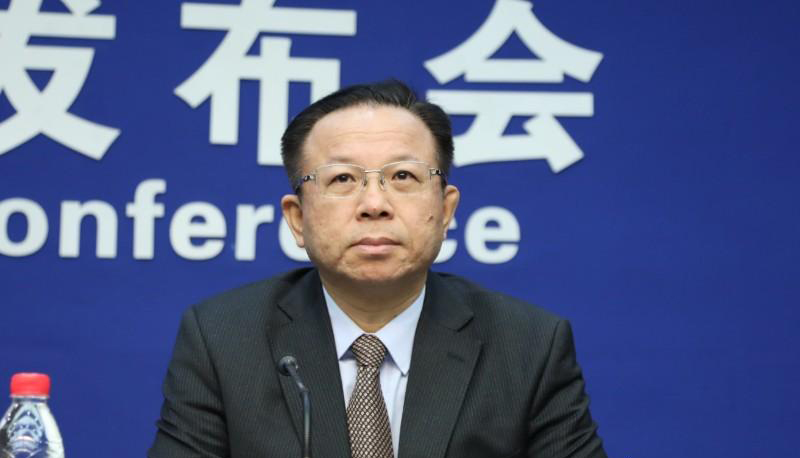Cctv newsOn January 14th, 2020, Ministry of Human Resources and Social Security held a press conference for the fourth quarter of 2019. The heads of the Employment Promotion Department, the Vocational Capacity Building Department, the Pension Insurance Department, the Labor Security Supervision Bureau and the Information Center answered questions from reporters.

The reporter asked, can you specifically introduce the effect of the policy of reducing social insurance rates in 2019? Are there any new measures to reduce fees in the next step?
Nie Mingxi, Director of the Pension Insurance Department of Ministry of Human Resources and Social Security, introduced that on April 1, 2019, after the General Office of the State Council issued the Comprehensive Plan for Reducing Social Insurance Rates, all localities actively implemented it, and the work progressed very smoothly, with obvious results, which were mainly reflected in the following four aspects:
First, all policies and measures have been put in place. From May 1, 2019, all the 29 provinces and Xinjiang Production and Construction Corps, as well as the basic endowment insurance units of government agencies and institutions, whose contribution rate is higher than 16%, have reduced to 16%. The provinces continued to reduce unemployment insurance rates in stages, and 26 provinces that met the conditions for reducing fees continued to reduce industrial injury insurance rates in stages. At the same time, the provinces have adjusted the payment base policy according to the actual situation, and the lower limit of the payment base has generally decreased, further reducing the payment burden of difficult enterprises and their employees, and further improving the flexibility of flexible employees in choosing the payment base.
Second, the annual fee reduction target was exceeded. In 2015, the total premium rate of five social insurances for employees was 41%, and then it was reduced six times. Last year, it was the largest reduction. At present, the total premium rate of five social insurances has dropped to 33.95%, of which the unit premium rate has dropped to 23.45%, and the six fee reductions have decreased by 7.05 percentage points. According to the latest statistics, in 2019, the expenses of basic old-age insurance, unemployment insurance and industrial injury insurance for enterprise employees were reduced by 425.2 billion yuan, exceeding the target of 310 billion yuan at the beginning of the year. The previous five fee reductions totaled 550 billion yuan. Together with the total fee reductions last year, social insurance fees have been reduced by nearly one trillion yuan since 2015.
Third, the effect of reducing the burden on enterprises is obvious. The fee reduction policy has strong inclusiveness and wide benefits, and the burden reduction effect is direct and effective. Both large and medium-sized enterprises and small and micro enterprises generally have a real sense of gain. Since the second half of last year, many media have intensively covered the feelings and effects of fee reduction at the grassroots level. Enterprises generally reported that the fee reduction policy has effectively reduced the labor cost of enterprises, and the fee reduction bonus has been transformed into the driving force for enterprise development and innovation, or into employee welfare to enhance enterprise cohesion, realize enterprise cost reduction, market vitality and employee benefits, which has been welcomed by the majority of enterprises and employees. At the same time, the social security rate is basically unified throughout the country, which has played a positive role in promoting the formation of a fair market competition environment and promoting balanced development among regions.
The fourth is to promote the sound development of the old-age insurance system. According to the latest monthly statistics, in 2019, the total income of enterprise basic endowment insurance fund was 3,783 billion yuan, the total expenditure was 3,463.1 billion yuan, the current balance was 319.9 billion yuan, and the accumulated balance was 5,086.9 billion yuan. It is a very gratifying situation that we can still achieve a balance of more than 300 billion yuan in the current period under the circumstances that the fee reduction has exceeded expectations and the basic pension level of retirees has been further improved. It fully shows that after the fee reduction, the threshold for participating in insurance payment has been lowered, the vitality of enterprises has been enhanced, and the enthusiasm of participating units and individuals has been improved, which has not only stabilized and promoted employment, but also achieved reasonable growth in fund income, which has promoted a virtuous circle of enterprise development and pension insurance system development. At the same time, through measures such as compacting the responsibilities of provincial governments, increasing the proportion of central fund transfers, and increasing support for provinces with special difficulties, the structural contradiction of funds between provinces has been effectively alleviated, ensuring that basic pensions are paid in full and on time.
In 2020, the State Council decided to reduce unemployment insurance and industrial injury insurance rates in stages for another year. It is a long-term strategic arrangement to reduce the old-age insurance rate to 16%, and Ministry of Human Resources and Social Security will further consolidate the results of the fee reduction.
关于作者